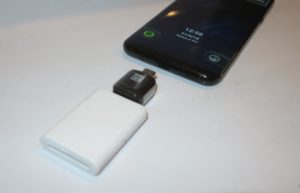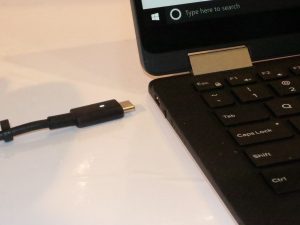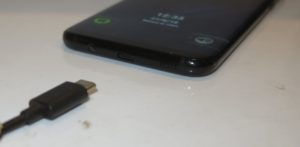I have given a fair bit of space on HomeNetworking01.info to the USB-C host-peripheral connection type since it was launched. It was more to do with a simplified high-throughput high-reliability connection type that will grace our computers, smartphones and similar devices.
But just lately I had upgraded to a new Samsung Galaxy S8+ Android smartphone due to my previous smartphone failing. But I had some previous experience with the USB-C connection through my reviewing of the Dell XPS 13 2-in-1 convertible Ultrabook, which was powered using USB-C as its primary connection type. The previous Android smartphones that I had before implemented a USB microAB connection for their power and data-transfer needs and recent iterations of Android which I experienced on the Galaxy Note series of phones supported USB OTG host-operation modes.
The main feature that I liked was the simple approach to connecting devices to my phone. Here, I didn’t have to worry about which way the cable plugged in to my phone, something that was important when it came to connecting it to a charger or power pack.
A situation I was previously encountering with the USB micro-B connector on the previous phones was the need to replace USB cables due to the USB micro-B plug wearing out in the USB micro-AB socket in these phones due to frequent connection and disconnection. This would be typical in relationship to connecting a phone up to a charger for charging then subsequently disconnecting it from the charger for regular use. Then I ended up buying replacement USB A to USB micro-B cables to remedy this problem.
Now I am ending up with a sure-fire connection experience for USB devices similar to using the regular USB connections commonly fitted to regular computers or peripherals.
That situation was often brought on through the use of leaf-spring-type lugs on the USB micro-B connector that were used to make sure the plug fitted properly in the common USB micro-AB socket fitted to smartphones. Here, they can easily wear out and lose their springiness through repeated use. The USB-C connector doesn’t make use of those leaf springs to secure the plug in the socket thanks to it being one plug design for data input and output.

USB-C also works for connecting this phone to a memory card reader for reading photos from my camera
Another benefit that I have experienced is the ability to use the same kind of connector whether the phone is to be a host to a peripheral or to be connected to another computer device. This avoids the need to worry about having to use a USB OTG cable if, for example, I wanted to use a photo from my camera’s SD card to post on Instagram. But I still needed to use a USB-A (female) to USB-C adaptor with the SD card reader but would find this useful if I wanted to use the SD card reader or a USB memory key with any USB-C host device.
Again, I wouldn’t need to worry about which way the cable plugged in to a computer or smartphone equipped with this connector. This can come in handy if I was dealing with USB memory keys attached to keyrings or USB peripherals hanging off a USB cable.
Personally, I see the USB Type-C connection appearing as a viable connection type for laptops, tablets and smartphones especially where these devices are designed to be slim.
One way this connection can be exploited further would be for smartphone manufacturers to install two USB Type-C connectors at the bottom of their products. Similarly, a USB battery pack with USB Type-C connectivity could have have three USB-C sockets and have USB hub functionality. This could then allow for multiple devices to be connected to the same host device.
This article will be built out further as I deal with more connection setups that are based around the USB Type-C connector.




